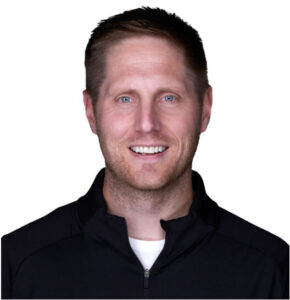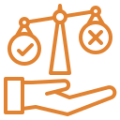The Hidden Fear Beneath the HR Role
In my work with HR professionals, I’ve found that many of them are far more focused on avoiding problems or putting out fires than they are on fulfilling a mission.
It’s understandable. When you spend your days managing conflict, legal compliance, layoffs, and employee dissatisfaction, your nervous system becomes wired for survival. You become a master of minimizing risk and reducing friction. But over time, possessing the mindsets of caution can quietly erode your courage and clarity.
Many HR leaders begin to do the following:
- Avoid risks that could elevate their impact
- Default to being reactive rather than strategic
- Choose comfort and control over growth and innovation
- Conflate “not messing up” with “leading well”
It’s not that HR leaders are playing small on purpose; it’s that their internal orientation – their being – has become conditioned to survive, not to elevate. To rise above, you have to transform your mindsets and understand your purpose as a leader.
Meet Sheryl: The Capable HR Leader Who Felt Stuck
Let me introduce you to someone I worked with (name changed): Sheryl, an experienced HR professional in a mid-sized tech company.
From the outside, Sheryl looked like the picture of growth. Her email signature was a cascade of certifications: SHRM-SCP, SPHR, multiple DEI credentials, and even a graduate degree. She had been in the organization for over 10 years.
But when I first met Sheryl, she was frustrated and discouraged. “I’ve been passed over for promotion three times,” she said. “I’ve done everything I’m supposed to do – more education, more certifications, more effort – but I still feel invisible.”
Her career strategy was classic: to get better, gain more knowledge and develop more skills. But her efforts weren’t translating into advancement or influence.
As we worked together, it became clear that the real barrier wasn’t her competence – it was her internal wiring. Sheryl was caught in a cycle of second-guessing, perfectionism, and fear of conflict. She avoided speaking up in executive meetings. She deferred to others even when her insight was strongest. She hesitated to challenge the status quo, even when she knew change was needed. Overall, she was great at accomplishing tasks assigned to her, but she struggled to take initiative on her own. Ultimately, this prevented organizational leaders from trusting her with promotions.
Sheryl’s development path had been focused entirely on knowledge and skills – on the “doing” side of growth. But what she really needed was to transform her mindsets, which are core to her being. It is only by doing so that she could build the confidence, emotional maturity, and self-trust to show up differently.
By helping Sheryl understand her true blockers, we were able to develop a more effective developmental strategy designed to help her not do better, but to become better by upgrading her internal operating system. In doing so, she became more grounded, more decisive, and more visible. Through this work, she stopped seeking external validation and started owning her voice.
Why “Doing Better” Isn’t Enough
Most professional development – especially in HR – centers on behavior change: better policies, better communication, better tools.
But behavior change alone can only take us so far. If our inner world – our mindsets, emotional patterns, and self-concept – remains underdeveloped, our leadership will always have a ceiling.
We must shift from a horizontal development path (adding knowledge and skills) to a vertical development path (elevating our internal operating system). That means learning how to transform your mindsets and update your identity as a leader.
Vertical development is about becoming a more advanced, aware, and resilient version of yourself. It’s about:
- Moving from fear-based control to purpose-driven courage.
- Shifting from self-protection to self-leadership.
- Letting go of old scripts to become someone new.
Common Self-Protective Mindsets That Hold HR Leaders Back
If you’re an HR leader, here are some subtle but powerful beliefs that may be limiting your growth:
- “I can’t afford to make a mistake.”
→ This fear of error leads to over-caution, which stifles innovation and bold leadership. - “If I challenge leadership, I’ll lose credibility or trust.”
→ This belief keeps you from being the strategic voice your organization needs. - “I need more credentials or experience before I can lead at the next level.”
→ This mindset delays action and reinforces inadequacy, even when you’re already capable. - “My job is to keep the peace.”
→ This conflict-avoidant stance prevents transformational change and enables dysfunction.
These beliefs are not signs of weakness – they’re signs of unexamined protective wiring. But the good news is that wiring can be rewired – you can transform your mindsets and unlock new possibilities for leadership.
The First Step: Deep Self-Awareness
If you want to rise above your limitations, you must first see them clearly.
This is where most development efforts fall short. They assume behavior change without addressing the internal root system: our fears, narratives, and unconscious patterns.
That’s why I’m inviting you to take a different kind of journey – one that starts with vertical self-awareness and leads to internal transformation.
In partnership with HRDQ, I’ll be leading a live webinar specifically for HR leaders who are ready to uncover the self-protective mindsets that are holding them back.
Together, we’ll:
- Explore the hidden forces driving your behavior.
- Identify the mindsets keeping you in survival mode.
- Engage in a powerful vertical development coaching experience.
- Leave with a renewed sense of clarity, courage, and self-leadership.
Are You Ready to Lead from a Higher Place?
You became an HR leader because you care. You want to elevate people, improve organizations, and make a difference.
But you can’t lead others to a higher place if you’re stuck in self-protection.
The most transformational HR leaders aren’t just experts in process – they are elevated beings who lead with authenticity, clarity, and courage.
That kind of leadership can’t be faked. It must be forged through self-awareness, healing, and the willingness to grow beyond your comfort zone.
If you’re ready to make that shift, I hope you’ll join me.
Your next level isn’t found in another credential.
It’s found in the courage to become someone new.


























